'A Shaun The Sheep Movie: Farmageddon' set visit: Inside Aardman, the most un-Hollywood film studio imaginable
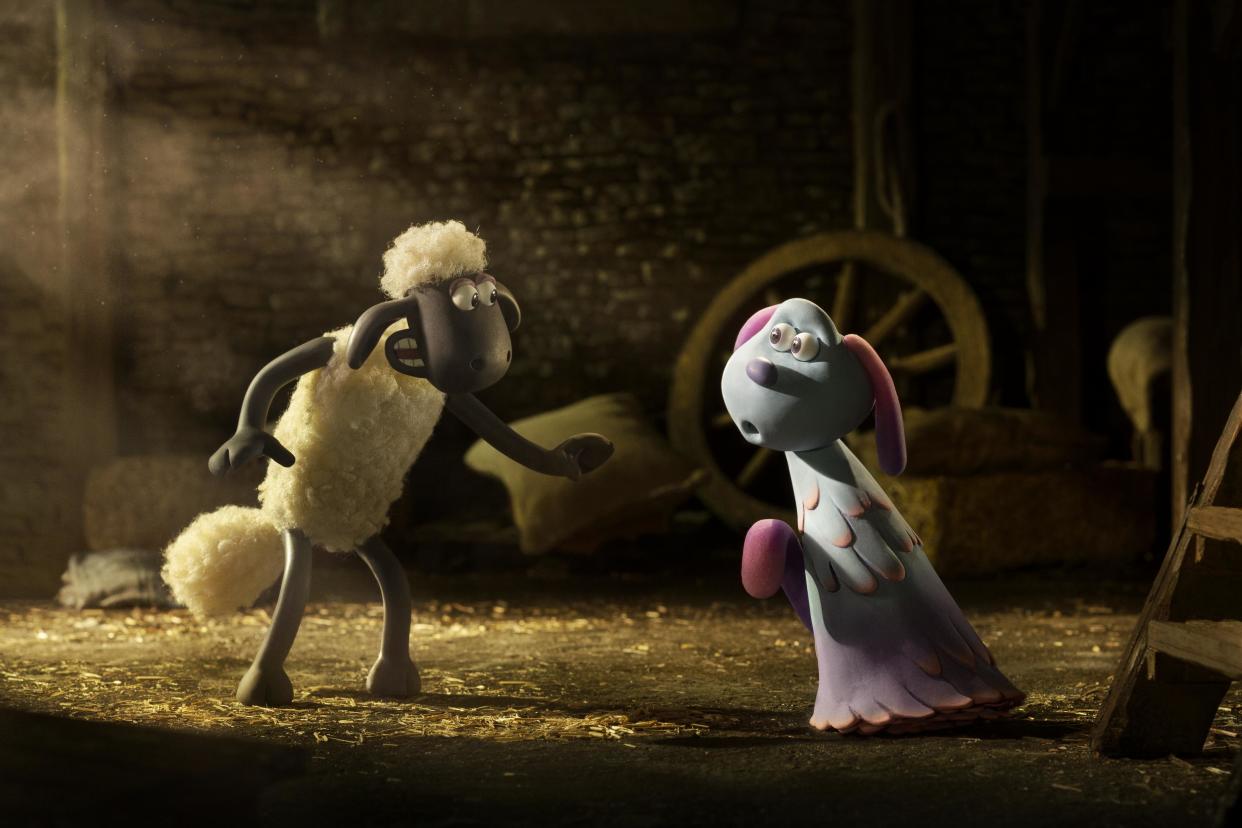
Aardman Animations’ features studio is the most un-Hollywood film studio you could possibly imagine.
The company’s main production hub - leased from the Church of England since the late 90s - is tucked away in the corner of an inauspicious industrial park on the outskirts of Bristol, nestled among call centres and double glazing warehouses. It’s about as far from the Sunset Strip as it gets.
Past the main entrance, which is home to models of Wallace & Gromit naturally, and through the corridors with the studio’s many Oscars, BAFTAs, and Annies on display in glass cabinets, the building opens up into huge hangar-like space. This is where Yahoo found 27 animators working across 34 sets, all beavering away on A Shaun The Sheep Movie: Farmageddon (in cinemas Friday) when we visited the studio earlier this year.
It’s a lot like a traditional film studio, with sets spread across a number of different sound stages, only on a 1/6th scale. There’s no need for golf carts to transport you from set to set though, as they’re literally feet apart. However, unlike at Pinewood or Leavesden, it’s an incredibly tranquil atmosphere with animators working through their scenes, frame by frame, in near total silence.
Farmageddon is a much bigger film than its predecessor, 2015’s Shaun The Sheep Movie, in every conceivable way. The Wallace & Gromit spin-off was an experiment for the studio, and its $100m+ box office gross emphatically answered the question of whether they could spin out a silent short into a full-length feature film.
Hailed for its slapstick humour, the largely dialogue-free film saw Shaun and his farmyard pals Bitzer, Timmy, and co venturing out of Mossy Bottom Farm to rescue their Farmer owner after he lost his memory in a freak accident.
Read more: New Wallace & Gromit in development
For the sequel, producer Paul Kewley says they wanted to expand the canvas, and take Shaun into a whole new genre.
“This time, we wanted to make something much bigger and more exciting,” Kewley explained to Yahoo. “So we landed on sci-fi. We were drawn to aliens because of the Midwest. We love those kind of films like Signs, it’s that classic alien environment.”
To accentuate these new sweeping vistas, Farmageddon has been shot in 2.35:1, a wider aspect ratio than the previous film, which was 16:9. Other recent films shot in this widescreen format include Jurassic World: Fallen Kingdom and Deadpool 2, giving you a taste of Aardman’s growing ambition this time around.
“We've got panorama Cinemascope, we're shooting it bigger,” explains Kewley. “It just it looks more epic.”
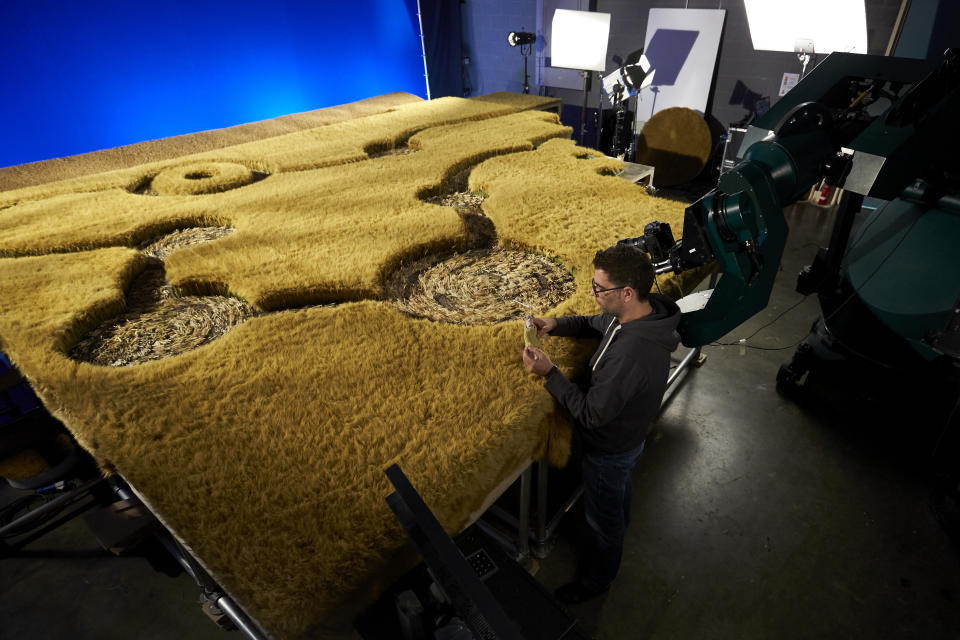
The film opens with a JJ Abrams-inspired sequence that sees a local dog walker having a close encounter with a UFO, that - in a move lifted directly from E.T. - accidentally leaves behind one of its inhabitants - Lula.
The purple and blue extra-terrestrial has a number of supernatural abilities that are revealed as Shaun and the farm gang take her under their wing. Comparing Shaun to Malcolm in the Middle - the most intelligent one in the pack, but also the most mischievous too - Kewley says he and Lula are kindred spirits.
“Lula is like an extreme version of Shaun. She’s somebody who has his characteristics but expanded, and she has a whole load of superpowers as well. She's incredibly unpredictable. And she's kind of lovely.”
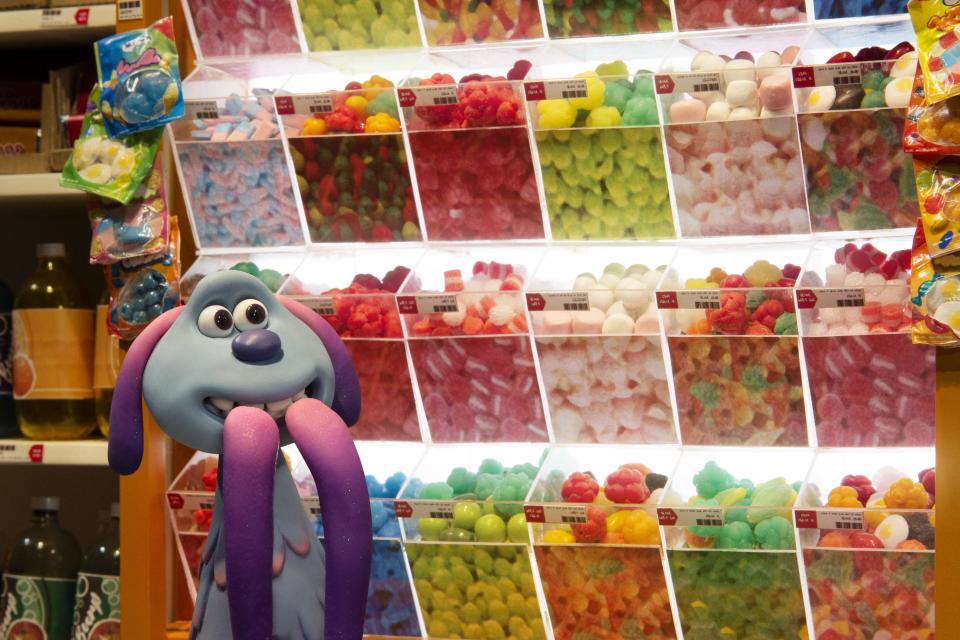
Hot on the heels of Lula is a Men In Black-style government agency - The Ministry of Alien Defence known colloquially as MAD - led by the mysterious Agent Red (Cate Blanchett’s character in Indiana Jones and The Kingdom Crystal Skull is cited as a frame of reference: “she’s like Theresa May but with better suits,” explains Kewley) and her robot Muggins, who is best described as a filing cabinet on wheels.
This influx of alien activity in Mossy Bottom leads to the town becoming obsessed with UFOs, and alien hunters descend to try catch a glimpse of extraterrestrial visitors. The Farmer, sensing an opportunity, opens up a local attraction - the Farmageddon of the film’s title.
If just one animator were to work on the film, it would take years to complete as there are around 1,000 shots that make up the film, hence the need for 27 animators working round the clock. Aardman shoots its animation in a unique style, with the animators only shooting 12 frames of the required 24 frames per second, a process they call ‘shooting on doubles’.
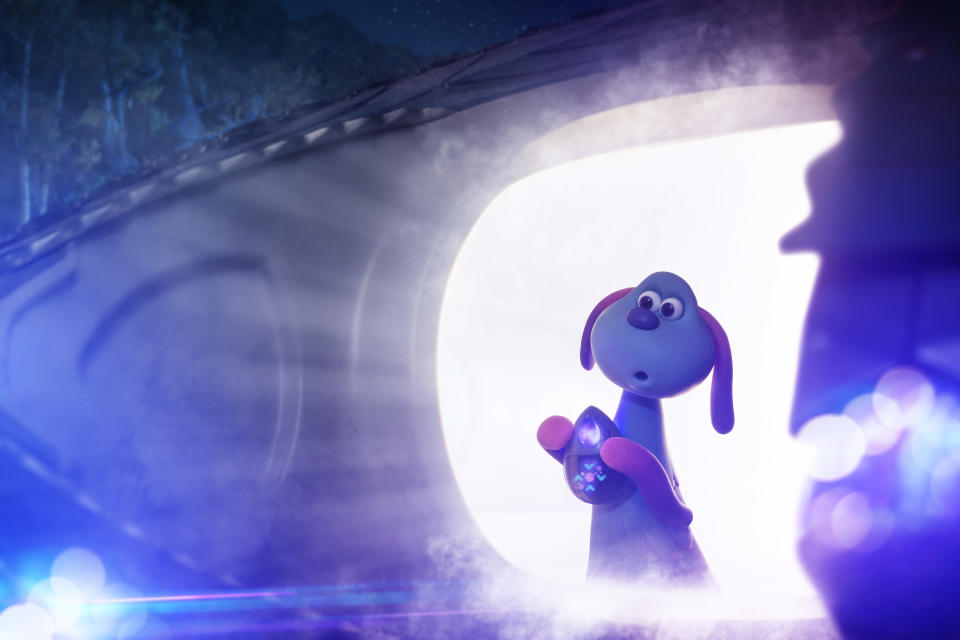
“24 frames is about a second of film,” explains producer David Sproxton, “but we only actually move the characters every two frames, so when the animator presses to capture that image, it will actually take two frames, and then they'll move on.”
This house style was borrowed by The LEGO Movie to give its animation style a more hand-crafted feel, he adds.
The task of breaking the story down into those shots falls to the film’s co-directors Will Becher and Richard Phelan, something they worked on for a year and a half before shooting could begin.
“I suppose there's just over 1000 shots [that make up Farmageddon],” explains Becher.

“But on the first film there was just over a quarter of a million storyboards.”
Those storyboards are used to plan out every shot in minute detail. The filmmakers use those storyboards to piece together a version of the film to test its pace, and tinker with it from there before a single piece of clay is modelled into shape.
“The story team are just used to going again and going again, trying to find the best way to organise the information, deliver the jokes, and tell the story as effectively as possible, to engage the audience throughout, and keep the pace up,” explains Becher. “It’s a really iterative process, the story process, so they deliver a lot of storyboards.”
Read more: Wallace & Gromit’s origins revealed
“And it’s even harder, because there’s no dialogue,” adds Phelan.
“The performance in the boards is really crucial,” continues Becher. “Sometimes if there is dialogue you can use fewer boards, because the actors voices will carry what the scene is about. What we’ve found with Shaun is that every blink or eye line turn is critical.”
Working with the bespoke, hand built characters, all constructed on site, animators will generally work on one scene in isolation from start to finish, in a monk-like trance.
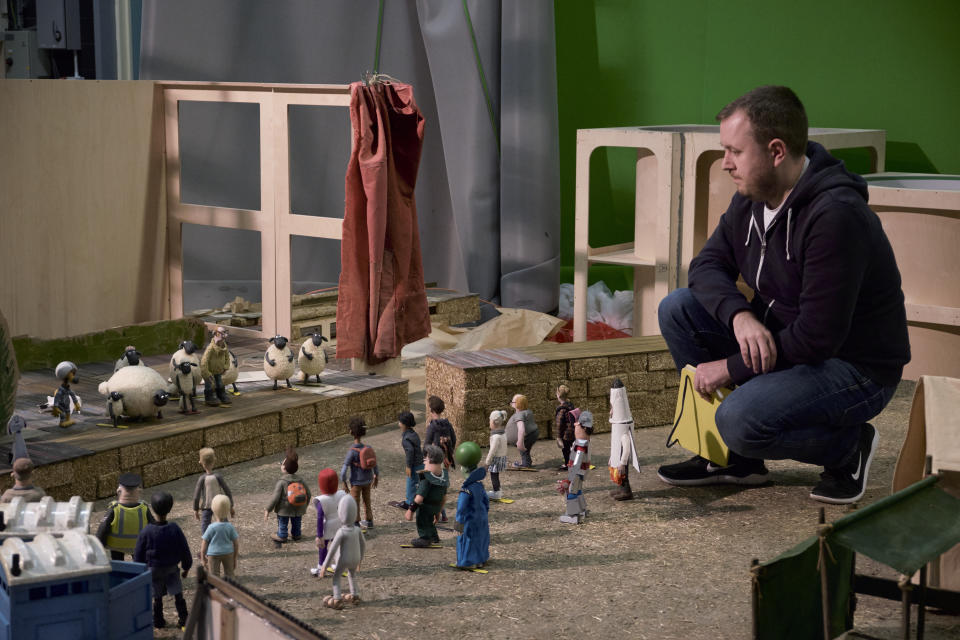
Working from the storyboards, the animators film themselves acting out the scenes in a process Aardman refers to as Live Action Video or LAVs for short, giving them a reference point to work from. This helps them to visualise specific movements for each character, which they break down into tiny incremental moments that they can watch on a loop as they move the characters millimeters at a time.
“It's really important with comedy for just getting the beats just right,” explains animation supervisor Grant Maisey taking a break from animating a pivotal scene that takes place at a government facility. “So we will act out all the shots.”
Maisey says the entire film can be watched from start to finish in LAV form, with the animators acting out the scenes in person, before they’re replaced on the big screen by Shaun and co. We’re treated to an early shot from the film which introduces Muggins.
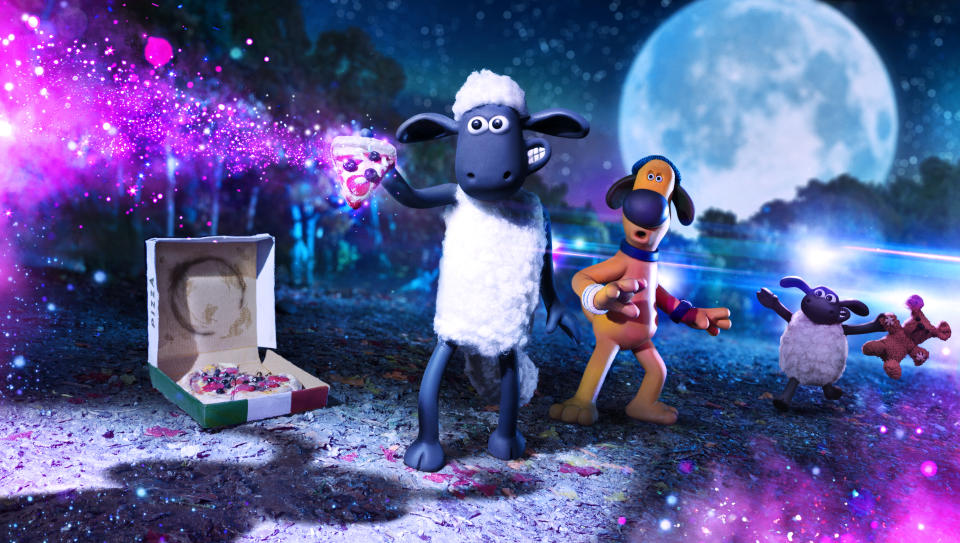
Being a robot that moves on tracks, the animators have simply perched someone on an office chair, which they then wheel about on the monitor to replicate his movements on screen.
“With the LAVs, you’re just trying to find something that you can get across in a simple way. Because Muggins is essentially just on tracks, the easiest thing for him was an office chair.”
“It would be really weird to watch the whole film as a LAV,” laughs Becher.
“It might be funny… for a bit,” adds Phelan.
“Pretty much every piece of acting, especially when there’s real emotion or comedy timing, we try and do as much as we can in the storyboards, but often we have to go to the LAV and really get those nuances.”

“For the animators it’s a really good way of getting a sense of where they’re going to go with a shot, so we can tell them what they’re thinking. Otherwise we could set someone on a shot and then two weeks later realise it’s completely different to how we would have done it.”
As with all Aardman films, you can expect hidden jokes and references in every single frame of the film. The co-directors threw themselves in the world of science-fiction for the film, going back to the B-movies of the 1950s like Ed Wood’s Plan 9 from Outer Space, all the way up to more recent entrants into the genre like Arrival and Interstellar.
Read more: How Laika made Missing Link
“We immersed ourselves into the world of science fiction to get references from everywhere,” says Phelan.
“People like to spot things when they go the cinema, so there’s some stuff in there which even flies over my head, because someone else has added it, and they go ‘someone will get it.’”
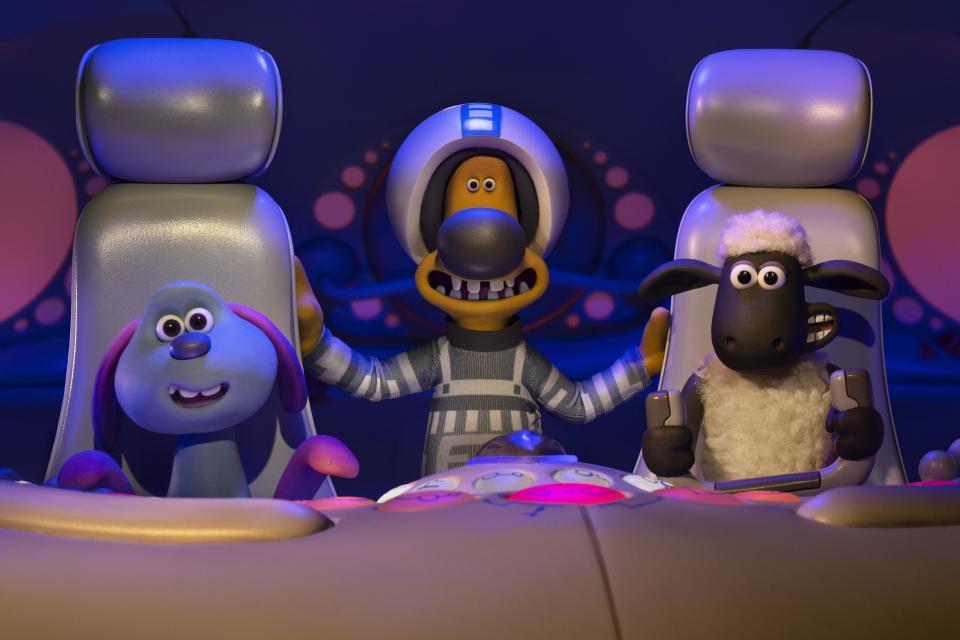
“I like to think some kid will watch Arrival in twenty years time, and be like ‘ahh, now I get it, Shaun The Sheep stole from Arrival’”.
It’s clear that a lot of love and attention goes into every Aardman feature, with the thumbprints of its creatives on show in every single frame of animation. And you get the sense that it’s the studio’s parochial setting, where the canteen noticeboard advertises the company’s next seed swap event, is essential to the studio’s enduring appeal.
“When we we did Chicken Run we very concerned that thumbprints would look ugly on the screen. So there was a lot of time spent smoothing out, actually using vinyl for beaks and things,” explains David Sproxton, co-founder of Aardman Animations.
“And we realised it took away the subconscious, craft-y feel of it. And Nick [Park] in particular wanted to keep what he calls the thumbiness: The fact that you can see that it’s hand-crafted. Subconsciously, you are aware that it has been handmade.
“I think it's interesting with some of the CG stuff… the big CG films they look super-perfection, but they can be a bit sterile. Things like fur animation has become unbelievably advanced, but they try to build in little bits of imperfections.
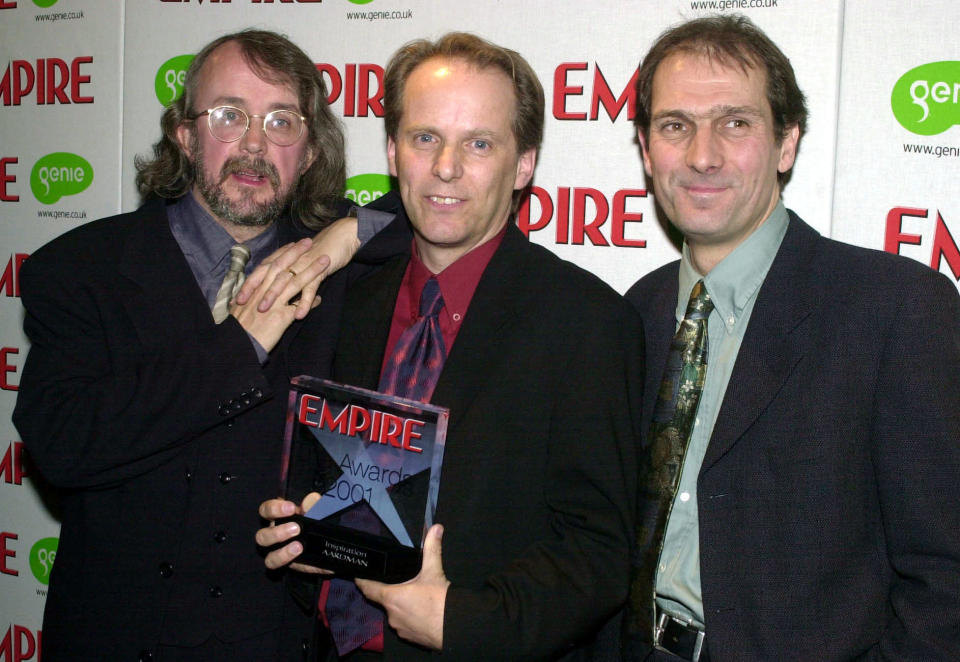
“I remember going to a seminar years ago about character design, and with CG it’s very easy to make everything absolutely symmetrical - two eyes, two ears, nose, mouth - and so in CG you had quite symmetrical characters. This seminar, which must have been 15 years ago, it was saying that ‘no, you need to make things asymmetrical, you’ve got to put some mistakes in here, to give the faces more character’.
“That happens naturally when you’re sculpting stuff. So in a way, the two are getting closer together, you’re now getting a more crafted look in CG. Laika has taken it to a real extreme. Their stop frame [animation style] now looks entirely CG, and frankly I think ‘why isn’t this CG?’ But they’ve taken that to an extraordinary extreme - it looks incredibly fluid.
“And actually, they've gone a bit too far, to our tastes. We want to keep it so it looks like these are real objects in a real space, because that’s part of the fun of it really.”
And in this space, no-one can hear you bleat.
A Shaun The Sheep Movie: Farmageddon comes to cinemas on 18 October.

 Yahoo Movies
Yahoo Movies 

